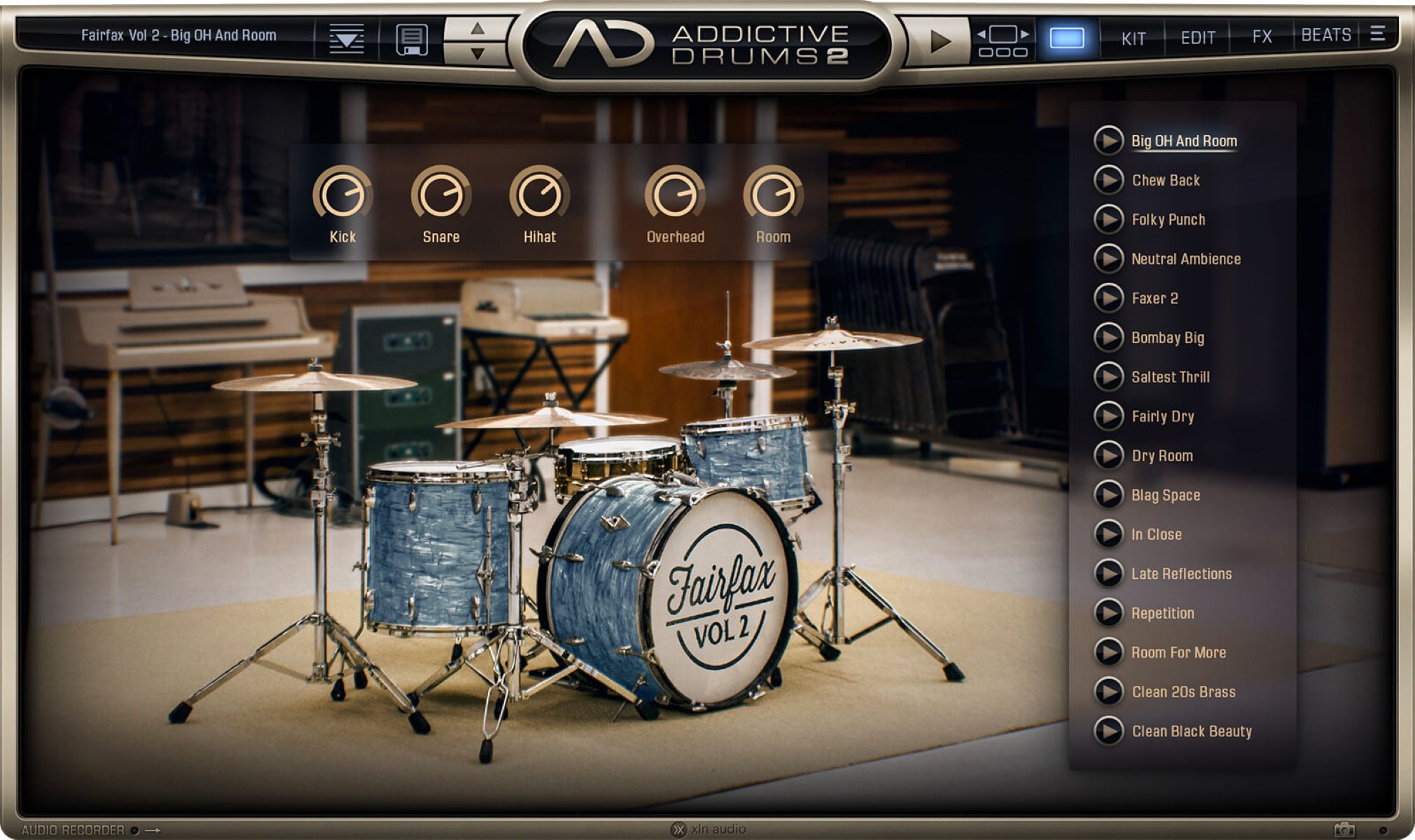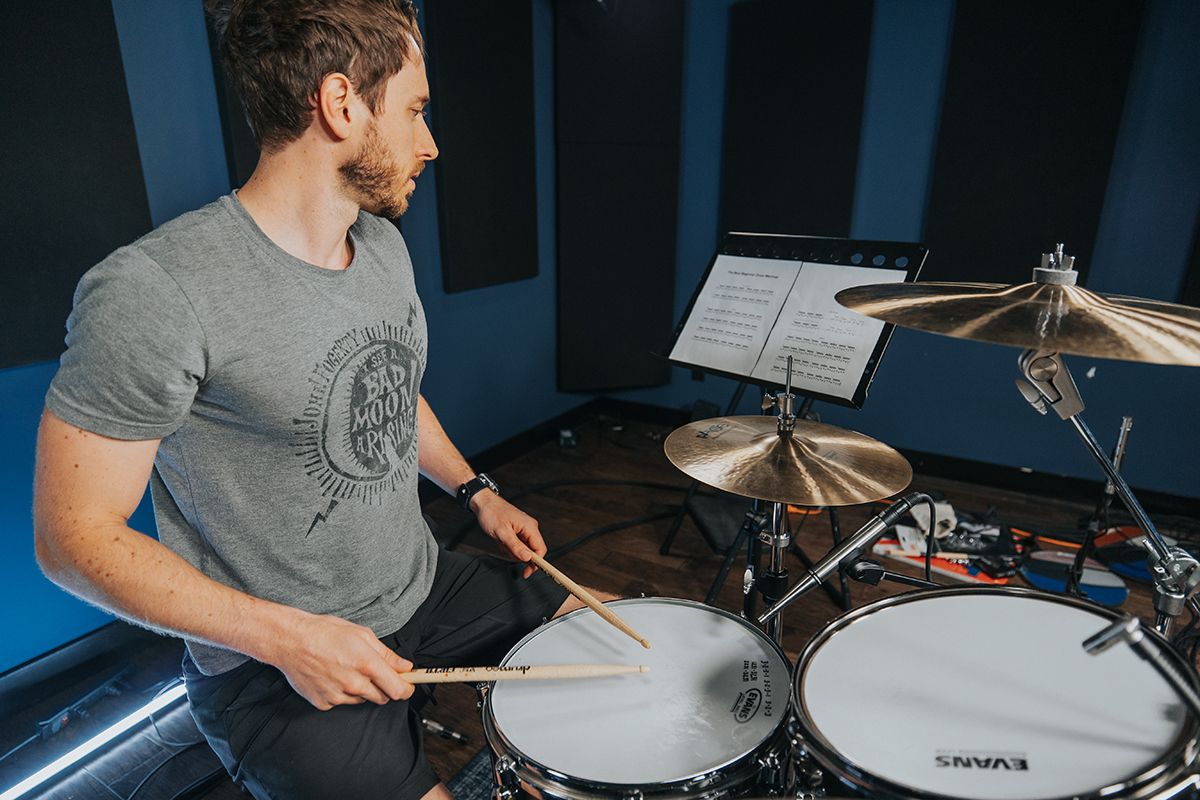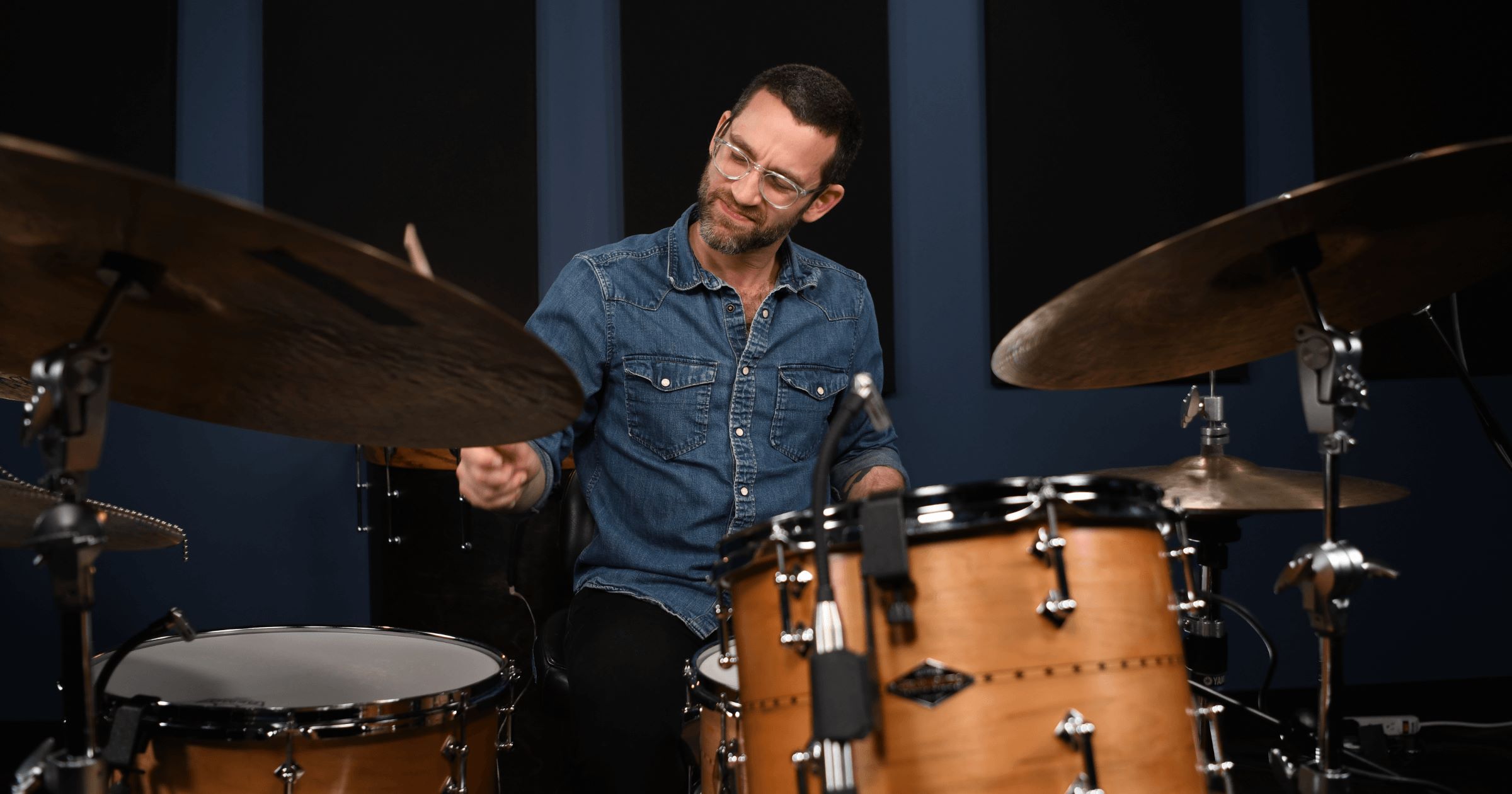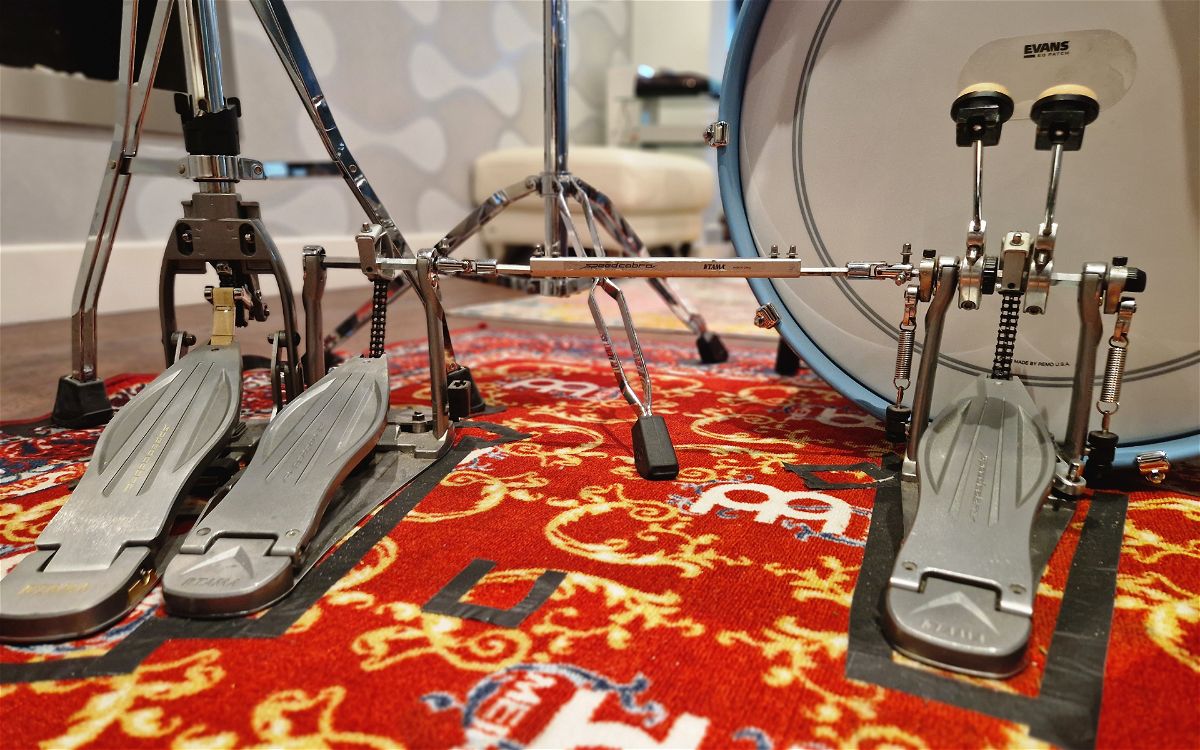Home>Instruments>Drums>How To Create Drum And Bass Beats
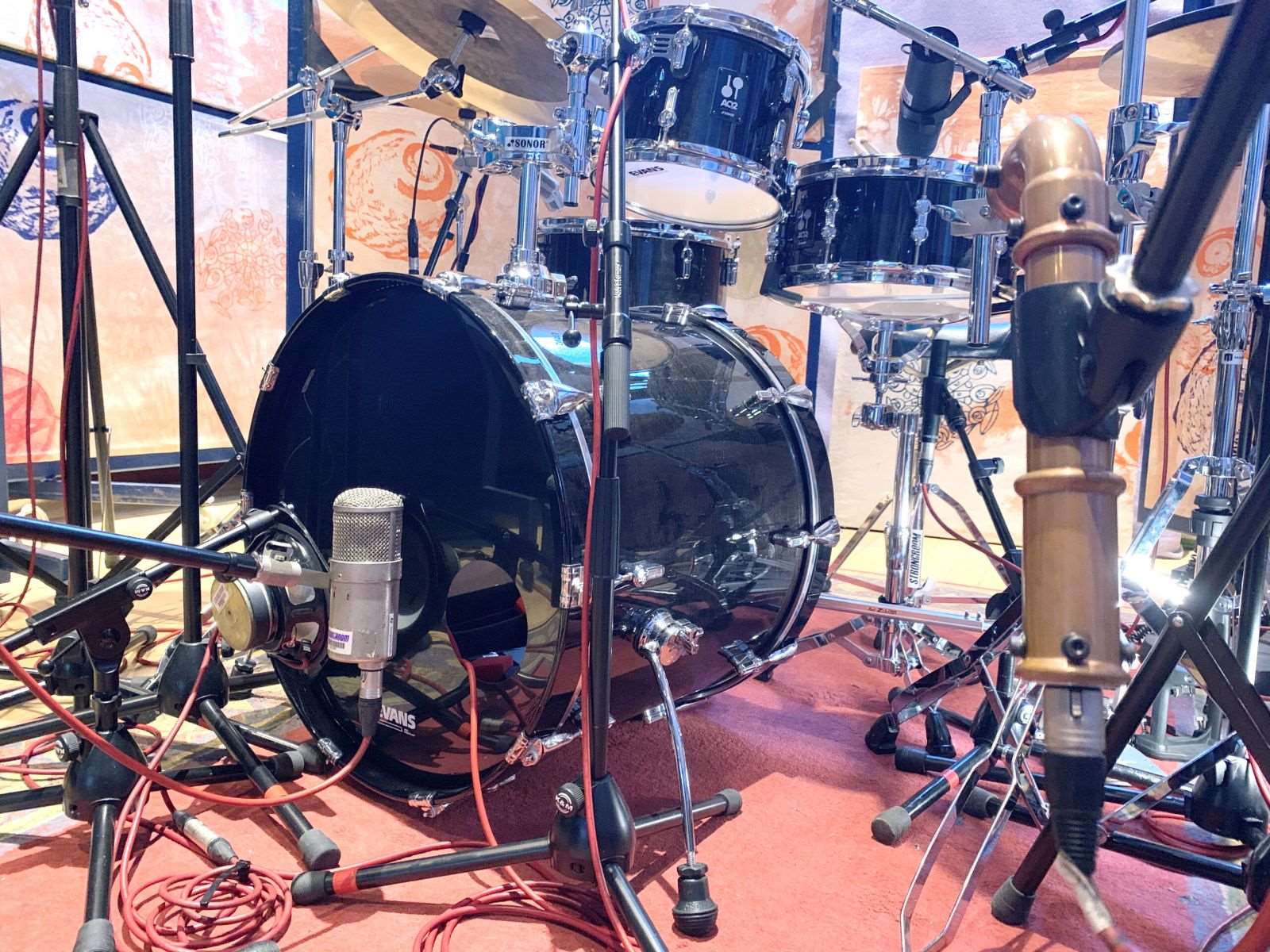

Drums
How To Create Drum And Bass Beats
Published: February 7, 2024
Learn how to create dynamic drum and bass beats with our expert tips and techniques. Master the art of using drums to produce powerful and energetic music. Unlock the secrets to crafting captivating rhythms and grooves.
(Many of the links in this article redirect to a specific reviewed product. Your purchase of these products through affiliate links helps to generate commission for AudioLover.com, at no extra cost. Learn more)
Table of Contents
Introduction
Welcome to the exciting world of drum and bass music production! Whether you're a budding producer or a seasoned musician looking to delve into a new genre, creating drum and bass beats offers a thrilling and dynamic creative outlet. Drum and bass, often abbreviated as DnB, is a genre known for its high-energy rhythms, intricate breakbeats, deep basslines, and atmospheric soundscapes. Originating from the UK underground music scene, drum and bass has evolved into a global phenomenon, captivating audiences with its pulsating grooves and futuristic sound design.
In this comprehensive guide, we'll explore the essential techniques and creative processes involved in crafting compelling drum and bass beats. From understanding the genre's unique characteristics to mastering the art of programming intricate drum patterns and crafting immersive basslines, this article will serve as your roadmap to unlocking the captivating world of drum and bass production.
Throughout this journey, we'll delve into the nuances of selecting the right tempo to drive the energy of your track, integrating captivating synths and samples to elevate the sonic landscape, and adding mesmerizing effects and atmospheric elements to infuse depth and dimension into your compositions. Furthermore, we'll touch upon the crucial aspects of mixing and mastering, ensuring that your final production shines with clarity and power.
Whether you're drawn to the relentless energy of neurofunk, the soulful vibes of liquid drum and bass, or the experimental sounds of jungle, this guide will equip you with the knowledge and inspiration to bring your creative visions to life. So, let's dive in and unravel the art of crafting mesmerizing drum and bass beats that will move both the dance floor and the soul.
Understanding Drum and Bass
To embark on a journey of creating compelling drum and bass beats, it’s essential to grasp the fundamental characteristics and sonic elements that define this electrifying genre. At its core, drum and bass is characterized by its fast-paced breakbeats, syncopated rhythms, and deep, rumbling basslines, all of which converge to create an immersive sonic experience.
One of the defining features of drum and bass is its emphasis on intricate drum patterns, typically featuring rapid-fire, syncopated rhythms that propel the energy of the music. These rhythms often incorporate chopped-up breakbeats, offering a dynamic and unpredictable sonic landscape that keeps the listener engaged and energized.
Furthermore, the basslines in drum and bass play a pivotal role in shaping the mood and intensity of the music. From gritty, distorted basses in neurofunk to the soulful, rolling basslines in liquid drum and bass, the genre offers a wide spectrum of sonic possibilities, allowing producers to evoke a diverse range of emotions through their compositions.
Another hallmark of drum and bass is its incorporation of atmospheric elements, including ethereal pads, haunting textures, and captivating soundscapes. These elements serve to add depth and dimension to the music, creating an immersive sonic environment that transports the listener to new realms of auditory exploration.
As you delve into the world of drum and bass production, it’s crucial to embrace the genre’s penchant for innovation and experimentation. Whether you’re drawn to the frenetic energy of dancefloor-oriented tracks or the introspective, emotive qualities of more introspective compositions, drum and bass provides a rich canvas for sonic exploration and artistic expression.
By understanding the foundational elements of drum and bass and immersing yourself in the genre’s diverse sonic landscape, you’ll be well-equipped to embark on a creative journey that promises excitement, inspiration, and endless possibilities.
Choosing the Right Tempo
When it comes to crafting captivating drum and bass beats, selecting the right tempo lays the foundation for the energy and groove of your composition. The tempo of a drum and bass track typically ranges from 160 to 180 beats per minute (BPM), reflecting the genre’s high-energy and fast-paced nature. This brisk tempo sets the stage for the intricate rhythms and pulsating grooves that define drum and bass music.
At the lower end of the spectrum, tracks in the range of 160-170 BPM often exude a sense of urgency and intensity, propelling the listener into a frenetic sonic journey that’s synonymous with the genre. These tempos are well-suited for crafting dynamic dancefloor anthems and driving, adrenaline-fueled compositions that command attention and movement.
On the other hand, the higher end of the tempo range, typically between 170-180 BPM, embraces an even more frenzied and exhilarating sonic landscape. Tracks at these tempos radiate an infectious energy that ignites the dance floor, inviting listeners to lose themselves in the relentless momentum of the music. The heightened tempo lends itself to intricate drum programming and rapid-fire rhythms, creating an electrifying sonic experience that captivates audiences.
When determining the ideal tempo for your drum and bass composition, it’s essential to consider the mood, atmosphere, and intended impact of your music. Whether you’re aiming to evoke a sense of euphoria and movement or delve into darker, more introspective sonic realms, the tempo serves as a powerful tool for shaping the emotional and visceral impact of your music.
Ultimately, the tempo you choose should align with the creative vision and emotional narrative you aim to convey through your drum and bass beats. By harnessing the power of tempo, you can infuse your compositions with a compelling sense of momentum, energy, and emotional depth, setting the stage for an immersive sonic journey that resonates with your audience.
Creating the Drum Pattern
The drum pattern forms the rhythmic backbone of a drum and bass track, driving the energy and momentum of the music with its intricate and dynamic beats. Crafting a compelling drum pattern involves a meticulous blend of rhythmic precision, creative flair, and an understanding of the genre’s rhythmic conventions.
At the heart of a drum and bass drum pattern lies the iconic amen break, a staple of the genre that has shaped its sonic identity. This classic breakbeat, characterized by its rapid-fire snare and intricate hi-hat patterns, serves as a foundational element for many drum and bass compositions. Incorporating the amen break into your drum pattern provides a potent rhythmic foundation, infusing your music with the genre’s signature energy and groove.
Furthermore, drum programming in drum and bass often involves intricate manipulation of individual drum hits, including snare rolls, ghost notes, and off-beat accents. These techniques add depth and dynamism to the drum pattern, creating a sense of rhythmic complexity and unpredictability that keeps the listener engaged and enthralled.
When crafting your drum pattern, consider the interplay between the kick, snare, and hi-hat elements, as well as the incorporation of percussive elements such as shakers, rides, and percussion loops. Experiment with layering and processing your drum sounds to achieve a cohesive and impactful rhythm section that propels the energy of your composition.
Moreover, the use of syncopation and polyrhythmic elements can elevate the rhythmic complexity of your drum pattern, adding a sense of groove and fluidity to the music. By experimenting with off-beat rhythms and syncopated accents, you can imbue your drum pattern with a captivating sense of forward motion and rhythmic intrigue.
As you delve into the creative process of crafting a drum pattern for your drum and bass composition, embrace experimentation and innovation. Whether you’re drawing inspiration from classic breakbeats, exploring intricate rhythmic permutations, or infusing your drum pattern with your unique sonic imprint, the art of creating a compelling drum pattern is a journey of rhythmic exploration and artistic expression.
Ultimately, a well-crafted drum pattern serves as the rhythmic heartbeat of your drum and bass composition, igniting the music with its infectious energy and propelling listeners into a captivating sonic adventure.
Adding Basslines
When it comes to crafting compelling drum and bass compositions, the bassline plays a pivotal role in shaping the mood, intensity, and groove of the music. Whether you’re aiming to evoke a sense of raw power and energy or infuse your composition with soulful, melodic depth, the bassline serves as a foundational element that underpins the sonic landscape of your track.
In drum and bass, the bassline often takes center stage, commanding attention with its deep, rumbling timbres and intricate rhythmic interplay. From gritty, distorted basses that drive the relentless energy of neurofunk to the soul-stirring, melodic basslines synonymous with liquid drum and bass, the genre offers a rich tapestry of sonic possibilities for crafting captivating basslines.
When creating basslines for your drum and bass compositions, consider the interplay between the bass and the rhythmic elements of the track, such as the kick and snare patterns. Crafting a bassline that locks in with the drum pattern creates a cohesive and propulsive rhythmic foundation, driving the energy and momentum of the music with precision and impact.
Furthermore, the use of modulation and dynamic processing techniques can add depth and expression to your basslines, allowing you to sculpt evolving timbres and textures that captivate the listener’s ear. Whether you’re experimenting with filter sweeps, envelope modulation, or distortion effects, the art of shaping and manipulating your bass sounds opens up a world of sonic possibilities that elevate the emotional and visceral impact of your compositions.
Additionally, exploring melodic and harmonic elements within the bassline can imbue your compositions with a sense of musicality and emotive depth. Whether you’re crafting soulful, expressive melodies or delving into the realm of dissonance and tension, the bassline serves as a canvas for infusing your compositions with a rich tapestry of musical expression.
Ultimately, the bassline in drum and bass serves as a driving force that shapes the sonic identity and emotional impact of the music. By embracing the creative process of crafting captivating basslines, you can elevate your drum and bass compositions to new heights, infusing them with a potent blend of energy, emotion, and sonic allure.
Incorporating Synths and Samples
Within the realm of drum and bass production, the integration of synths and samples plays a pivotal role in shaping the sonic landscape and emotive depth of the music. Whether you’re aiming to infuse your compositions with ethereal textures, captivating melodies, or futuristic soundscapes, the creative use of synths and samples offers a wealth of sonic possibilities for crafting immersive and evocative drum and bass beats.
When incorporating synths into your drum and bass compositions, consider the diverse array of sonic textures and timbres at your disposal. From lush pads and evolving atmospheres to razor-sharp leads and intricate arpeggios, synthesizers provide a versatile palette for sculpting captivating sonic landscapes that enhance the emotional resonance of your music.
Furthermore, the use of samples, ranging from vocal snippets and atmospheric textures to percussive elements and field recordings, adds depth and character to your compositions. Samples can imbue your music with a sense of narrative, transporting the listener to evocative sonic realms and infusing your beats with a rich tapestry of sonic detail.
As you explore the creative process of integrating synths and samples into your drum and bass compositions, consider the interplay between these elements and the rhythmic and melodic core of your music. Whether you’re layering atmospheric pads to add depth to your compositions or weaving intricate vocal samples into the fabric of your beats, the art of blending synths and samples offers a boundless canvas for sonic exploration and artistic expression.
Moreover, the use of synthesis and sound design techniques allows you to sculpt and shape your sonic elements, creating evolving textures and dynamic timbres that captivate the listener’s ear. Whether you’re experimenting with modulation, filtering, or granular synthesis, the art of sound design opens up a world of sonic possibilities, empowering you to craft evocative and immersive sonic experiences.
Ultimately, the integration of synths and samples in drum and bass production invites you to embark on a sonic journey of exploration and creativity. By embracing the diverse sonic textures and emotive potential of synths and samples, you can elevate your drum and bass compositions to new heights, infusing them with a captivating blend of sonic innovation and emotive depth.
Adding FX and Atmosphere
In the realm of drum and bass production, the strategic use of effects and atmospheric elements serves as a transformative tool for shaping the sonic landscape and emotive depth of the music. Whether you’re aiming to evoke a sense of otherworldly immersion, add spatial depth to your compositions, or infuse your beats with captivating sonic details, the creative integration of FX and atmospheric elements offers a wealth of sonic possibilities for crafting evocative and immersive drum and bass compositions.
Effects such as reverb, delay, and modulation play a crucial role in adding spatial depth and sonic dimension to your compositions. Whether you’re creating expansive, ethereal reverberations that transport the listener to vast sonic spaces or incorporating rhythmic delay patterns that infuse your beats with a sense of movement and intrigue, the strategic use of effects empowers you to sculpt a captivating sonic environment that captivates the listener’s imagination.
Furthermore, the use of atmospheric elements, including field recordings, ambient textures, and haunting soundscapes, adds depth and character to your compositions. These elements serve to create an evocative sonic backdrop, infusing your beats with a sense of narrative and transporting the listener to immersive sonic realms that transcend conventional musical boundaries.
As you delve into the creative process of adding FX and atmosphere to your drum and bass compositions, consider the interplay between these elements and the rhythmic and melodic core of your music. Whether you’re weaving subtle atmospheric textures into the fabric of your compositions or utilizing effects to create mesmerizing sonic transitions, the art of blending FX and atmosphere offers a boundless canvas for sonic exploration and artistic expression.
Moreover, the use of granular synthesis, spectral processing, and dynamic effects manipulation allows you to craft evolving textures and immersive sonic experiences that captivate the listener’s ear. Whether you’re experimenting with spectral processing to create ethereal textures or harnessing the power of dynamic effects to add tension and release to your compositions, the art of FX and atmosphere opens up a world of sonic possibilities, empowering you to craft compelling and emotive drum and bass beats.
Ultimately, the strategic integration of FX and atmospheric elements invites you to embark on a sonic journey of exploration and creativity. By embracing the diverse sonic textures and emotive potential of effects and atmospheric elements, you can elevate your drum and bass compositions to new heights, infusing them with a captivating blend of sonic innovation and emotive depth.
Mixing and Mastering
As you near the culmination of your drum and bass production journey, the crucial stages of mixing and mastering await, offering the opportunity to refine and elevate your compositions to their full sonic potential. The art of mixing involves balancing and sculpting the individual elements of your tracks, ensuring clarity, cohesion, and impactful sonic presence. On the other hand, mastering involves the final polish, enhancing the overall sonic balance, dynamics, and tonal characteristics of your music, readying it for distribution and consumption.
During the mixing phase, attention to detail is paramount. Balancing the levels of the kick, snare, bass, synths, and atmospheric elements is essential to create a cohesive sonic tapestry where each element contributes to the overall impact of the track. Additionally, spatial effects such as reverb and delay are meticulously applied to add depth and dimension, creating a sense of sonic space that envelops the listener.
Furthermore, the use of dynamic processing techniques such as compression and equalization plays a crucial role in shaping the sonic character of your compositions. By carefully sculpting the dynamics and tonal balance of individual elements, you can ensure that each component of your music occupies its rightful place in the mix, contributing to a balanced and impactful sonic presentation.
As you transition to the mastering phase, the focus shifts to refining the overall sonic balance and tonal characteristics of your music. Mastering involves applying subtle yet critical adjustments to the dynamics, EQ, and stereo imaging of your tracks, ensuring that they translate optimally across various playback systems and environments.
Moreover, mastering involves the application of limiting and multiband compression to enhance the perceived loudness and impact of your music, while maintaining a balanced and dynamic sonic profile. The goal of mastering is to elevate the sonic fidelity of your compositions, ensuring that they shine with clarity, power, and a cohesive sonic identity.
Throughout the mixing and mastering process, it’s essential to maintain a critical ear and a commitment to sonic excellence. Whether you’re refining the spatial balance of your tracks during mixing or applying the final touches to the tonal characteristics and dynamics during mastering, the art of mixing and mastering is a journey of precision, artistry, and a relentless pursuit of sonic perfection.
Ultimately, the meticulous attention to detail and sonic refinement offered by the mixing and mastering stages serves as the gateway to presenting your drum and bass compositions in their most compelling and impactful form, ready to captivate and resonate with audiences around the world.
Conclusion
Congratulations on embarking on a captivating journey through the art of crafting drum and bass beats. Throughout this comprehensive guide, we’ve delved into the essential techniques and creative processes that define the captivating world of drum and bass production. From understanding the genre’s foundational elements to mastering the intricacies of tempo selection, drum programming, bassline crafting, and the integration of synths, samples, FX, and atmospheric elements, you’ve gained valuable insights into the art of creating compelling drum and bass compositions.
As you continue to explore the boundless sonic possibilities of drum and bass production, remember that innovation, experimentation, and a relentless pursuit of sonic excellence are the cornerstones of artistic expression in this dynamic genre. Whether you’re drawn to the frenetic energy of dancefloor anthems, the emotive depth of liquid drum and bass, or the experimental frontiers of jungle, the world of drum and bass production invites you to unleash your creativity and carve out your unique sonic identity.
Furthermore, the journey doesn’t end with the creation of your compositions. The crucial stages of mixing and mastering offer the opportunity to refine and elevate your music to its full sonic potential, ensuring that your drum and bass beats shine with clarity, power, and a cohesive sonic identity that resonates with audiences around the globe.
As you apply the knowledge and insights garnered from this guide to your own creative endeavors, remember that the art of drum and bass production is a deeply personal and emotive journey. Whether you’re crafting beats that ignite the dance floor, evoke introspective contemplation, or transport listeners to uncharted sonic realms, your creative voice has the power to captivate, inspire, and move audiences in profound ways.
So, as you venture forth into the captivating world of drum and bass production, embrace the spirit of sonic exploration, artistic innovation, and a relentless pursuit of excellence. With each beat you craft, you contribute to the rich tapestry of drum and bass music, leaving an indelible mark on the genre and the hearts of those who resonate with your sonic creations.
May your drum and bass compositions reverberate with energy, emotion, and sonic allure, captivating audiences and leaving an enduring imprint on the ever-evolving landscape of electronic music.

